A recent publication by a collaborative team comprising the American Dental Association (ADA) Council on Scientific Affairs, the ADA Science and Research Institute, the University of Pittsburgh School of Dental Medicine, and the Center for Integrative Global Oral Health at the University of Pennsylvania has delivered critical guidelines for managing acute dental pain in children.
The guidelines emphasize a shift away from opioid medications, with a strong preference for nonopioid alternatives such as nonsteroidal anti-inflammatory drugs (NSAIDs) like ibuprofen and naproxen, either alone or in combination with acetaminophen, for the management of acute dental pain following tooth extractions. This recommendation aligns with the current stance of the US Food and Drug Administration (FDA), which has contraindicated the use of codeine and tramadol in children for managing acute pain.
Key recommendations and good practice statements for the pharmacologic management of acute dental pain: postoperative pain after 1 or more simple or surgical tooth extractions in children
- Initiate pain management with ibuprofen or naproxen alone or in combination with acetaminophen, rather than using acetaminophen alone. Additionally, the guideline advises clinicians to tailor dosages based on the child’s weight rather than age.
- When pain control using nonsteroidal anti-inflammatory drugs alone is inadequate, the guideline panel suggests the addition of acetaminophen.
- When nonsteroidal anti-inflammatory drugs are contraindicated, the guideline panel suggests the use of acetaminophen alone.
- The guideline panel advises clinicians to assess children’s pain using suitable age-appropriate tools. For example, a Faces scale (≥ 3 years), a numerical rating scale (≥ 8 years), a visual analog scale (≥ 8 years), or a behavioral scale (1-3 years).
- The guideline panel advises clinicians to counsel patients and their caregivers that they should expect some pain and the analgesics should make their pain manageable. The guideline panel also recommends discussing with the patient, parent, guardian, or caregiver their past experiences, preferences, and values regarding managing acute dental pain before prescribing.
- The guideline panel recommends clinicians thoroughly review the patient’s medical and social histories and medications and supplements to avoid overdose and adverse drug-drug interactions.
- The guideline panel recommends clinicians thoroughly review the patient’s medical and social histories and medications and supplements to avoid overdose and adverse drug-drug interactions.
- According to the FDA, codeine and tramadol are contraindicated in children younger than 12 years.
Clinical pathway for the pharmacologic management of acute dental pain: postoperative pain after surgical and simple tooth extractions in children.

Clinical pathway for the pharmacologic management of acute dental pain: postoperative pain after surgical and simple tooth extractions in children.
Recommendations and good practice statements for the temporary pharmacologic management of toothache in children with no immediate access to definitive dental treatment.
- For the temporary management of toothache before definitive dental treatment in children, the guideline panel suggests the use of ibuprofen alone, naproxen alone, or either of the two in combination with acetaminophen over the use of acetaminophen alone.
- If pain control using nonsteroidal anti-inflammatory drugs alone is inadequate, the guideline panel suggests the addition of acetaminophen.
- When nonsteroidal anti-inflammatory drugs are contraindicated, the guideline panel suggests the use of acetaminophen alone.
- The guideline panel advises clinicians to assess children’s pain using suitable age-appropriate tools. For example, a Faces scale (≥ 3 years), a numerical rating scale (≥ 8 years), a visual analog scale (≥ 8 years), or a behavioral scale (aged 1-3 years).
- The guideline panel advises clinicians to counsel patients and their caregivers that they should expect some pain and the analgesics should make their pain manageable. The guideline panel also recommends discussing with the patient, parent, guardian, or caregiver their past experiences, preferences, and values regarding managing acute dental pain before prescribing.
- The guideline panel reminds users of these recommendations that they only apply to settings in which definitive dental treatment is not immediately available. These pharmacologic strategies will alleviate dental pain temporarily until a referral for definitive dental treatment is in place.
- The guideline panel recommends clinicians thoroughly review the patient’s medical and social history and medications and supplements to avoid overdose and adverse drug-drug interactions.
- In children younger than 12 years. In addition, topical benzocaine should not be used in infants or young children owing to the high risk of methemoglobinemia. According to the US Food and Drug Administration, codeine and tramadol are contraindicated.
These recommendations are applicable only to settings in which definitive dental treatment is not available. Definitive dental treatment includes pulpectomy, nonsurgical root canal treatment, incision for drainage of abscess, and tooth extraction. Patients or their caregivers should be instructed to call if their pain fails to lessen over time or to call if the referral to receive definitive dental treatment within 2 through 3 days is not possible.
Clinical pathway for the temporary pharmacologic management of toothache with no immediate access to definitive dental treatment in children.
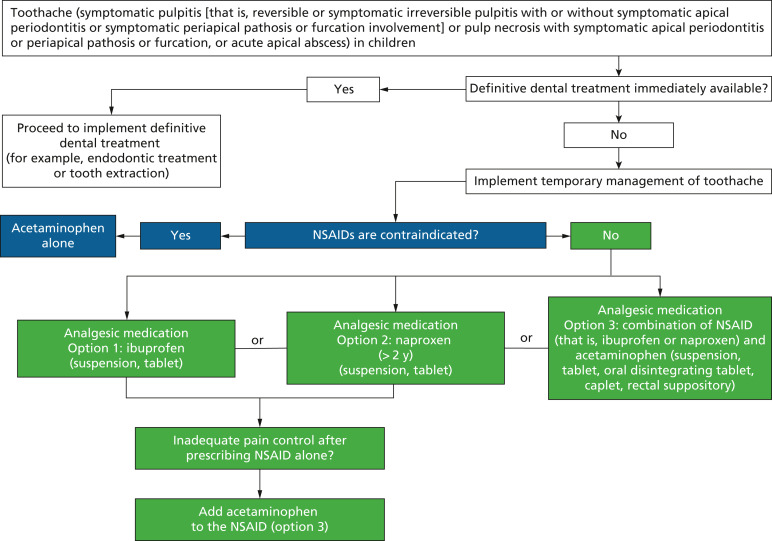
Clinical pathway for the temporary pharmacologic management of toothache with no immediate access to definitive dental treatment in children.
These evidence-based recommendations aim to provide clinicians with clear guidance on the safe and effective pharmacologic management of dental pain in children, emphasizing the importance of nonopioid alternatives and individualized treatment approaches. By prioritizing patient safety and well-being, dental professionals can ensure optimal care for pediatric patients experiencing acute dental pain.
Source: The Journal of American Dental Association

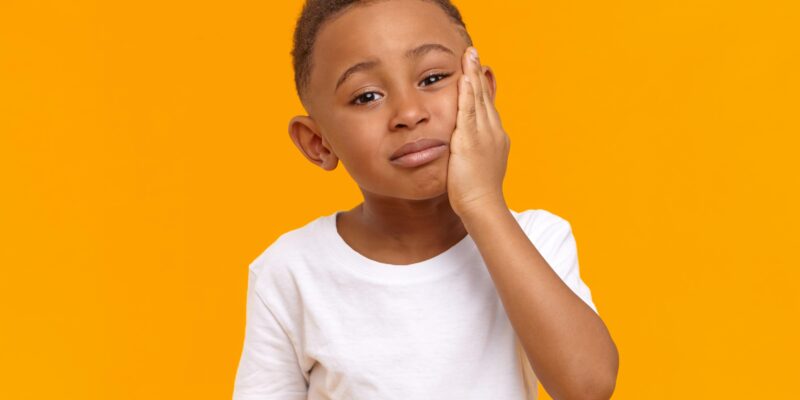


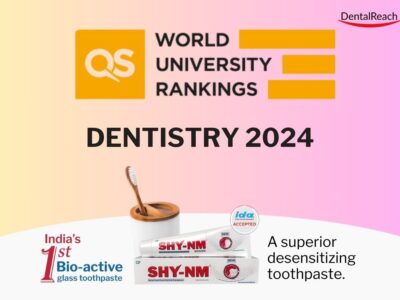
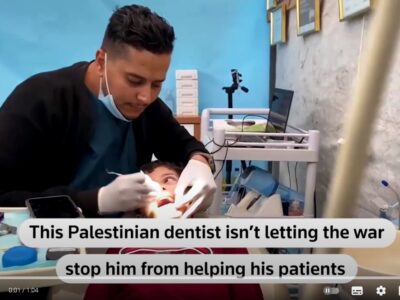

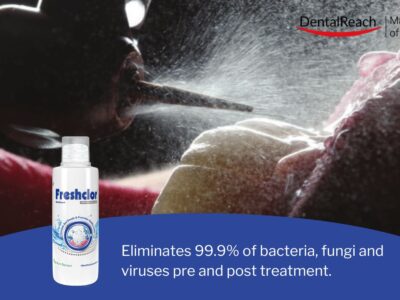









Comments